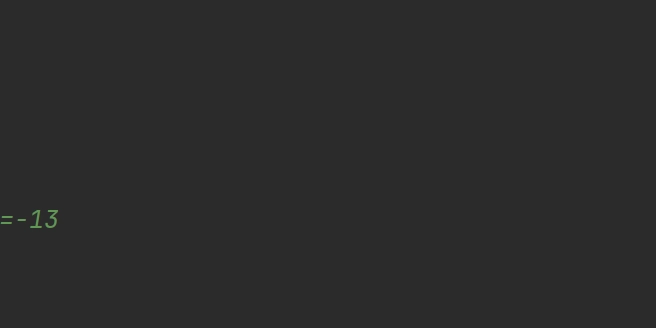Python Data Types – A Beginner’s Guide
In our previous discussion, we explored variables—how they store different types of values in Python. Now, let's dive into data types, which define the kind of data stored in a variable. Unlike languages such as Java, C, or C++, where you must explicitly declare a variable’s type, Python handles data types dynamically. This means you can directly assign a value to a variable without specifying its type. What Are Data Types? A data type not only defines the type of data stored in a variable but also determines the amount of memory allocated for that variable. Common Data Types in Python Python provides several built-in data types: Integer (int) – Whole numbers, both positive and negative. num1 = 23 num2 = -232 *Floating-point (float) *– Numbers with decimals. num3 = 23.232 num4 = -23.232 String (str) – Text enclosed in single or double quotes. name = "Brian" blood_group = 'B' Character (char) – Python doesn’t have a separate char type like C or Java. Instead, a single-character string (e.g., 'A', 'B') is still a string. Boolean (bool) – Represents True or False, often used in conditions. is_greater = 10 > 3 # True is_adult = age >= 18 # True Complex Numbers (complex) Python has a built-in complex type, which is not commonly found in some languages. num = 3 + 4j # Complex number print(type(num)) # Output: Checking Data Types and Memory Usage Python provides the** type()** function to check the type of any variable: print(type(232)) # Output: print(type(23.232)) # Output: print(type("Brian")) # Output: print(type(True)) # Output: To check the memory size of a variable, use sys.getsizeof(): import sys print(sys.getsizeof(232)) # Output: Memory size of int print(sys.getsizeof(23.232)) # Output: Memory size of float print(sys.getsizeof("Brian")) # Output: Memory size of string Memory Usage of Data Types Different data types occupy different amounts of memory in Python. Key Observations: Integers (int) – Generally take 28 bytes, but the size can increase with larger numbers. Floating-point numbers (float) – Usually 24 bytes, independent of the value. Strings (str) – Memory depends on the length of the string. Each character takes extra space. *Boolean (bool) *– Takes 28 bytes, same as an integer. Note: Unlike C or Java, where int and float have fixed sizes (e.g., 4 bytes, 8 bytes), Python’s data types are dynamically sized. The actual memory usage can vary depending on the system and Python implementation. Key Takeaways: ✔ Data types define both the type and memory usage of variables. ✔ Strings generally require more memory than integers or booleans. ✔ Use type() to check the data type and sys.getsizeof() to check memory allocation. ✔ Python dynamically assigns types without explicit declarations. This flexibility makes Python beginner-friendly while keeping it powerful for complex applications.

In our previous discussion, we explored variables—how they store different types of values in Python. Now, let's dive into data types, which define the kind of data stored in a variable.
Unlike languages such as Java, C, or C++, where you must explicitly declare a variable’s type, Python handles data types dynamically. This means you can directly assign a value to a variable without specifying its type.
What Are Data Types?
A data type not only defines the type of data stored in a variable but also determines the amount of memory allocated for that variable.
Common Data Types in Python
Python provides several built-in data types:
Integer (int) – Whole numbers, both positive and negative.
num1 = 23
num2 = -232
*Floating-point (float) *– Numbers with decimals.
num3 = 23.232
num4 = -23.232
String (str) – Text enclosed in single or double quotes.
name = "Brian"
blood_group = 'B'
Character (char) – Python doesn’t have a separate char type like C or Java. Instead, a single-character string (e.g., 'A', 'B') is still a string.
Boolean (bool) – Represents True or False, often used in conditions.
is_greater = 10 > 3 # True
is_adult = age >= 18 # True
Complex Numbers (complex)
Python has a built-in complex type, which is not commonly found in some languages.
num = 3 + 4j # Complex number
print(type(num)) # Output:
Checking Data Types and Memory Usage
Python provides the** type()** function to check the type of any variable:
print(type(232)) # Output:
print(type(23.232)) # Output:
print(type("Brian")) # Output:
print(type(True)) # Output:
To check the memory size of a variable, use sys.getsizeof():
import sys
print(sys.getsizeof(232)) # Output: Memory size of int
print(sys.getsizeof(23.232)) # Output: Memory size of float
print(sys.getsizeof("Brian")) # Output: Memory size of string
Memory Usage of Data Types
Different data types occupy different amounts of memory in Python.
Key Observations:
Integers (int) – Generally take 28 bytes, but the size can increase with larger numbers.
Floating-point numbers (float) – Usually 24 bytes, independent of the value.
Strings (str) – Memory depends on the length of the string. Each character takes extra space.
*Boolean (bool) *– Takes 28 bytes, same as an integer.
Note: Unlike C or Java, where int and float have fixed sizes (e.g., 4 bytes, 8 bytes), Python’s data types are dynamically sized. The actual memory usage can vary depending on the system and Python implementation.
Key Takeaways:
✔ Data types define both the type and memory usage of variables.
✔ Strings generally require more memory than integers or booleans.
✔ Use type() to check the data type and sys.getsizeof() to check memory allocation.
✔ Python dynamically assigns types without explicit declarations.
This flexibility makes Python beginner-friendly while keeping it powerful for complex applications.









































































































































































![[The AI Show Episode 142]: ChatGPT’s New Image Generator, Studio Ghibli Craze and Backlash, Gemini 2.5, OpenAI Academy, 4o Updates, Vibe Marketing & xAI Acquires X](https://www.marketingaiinstitute.com/hubfs/ep%20142%20cover.png)


























































































































![[FREE EBOOKS] The Kubernetes Bible, The Ultimate Linux Shell Scripting Guide & Four More Best Selling Titles](https://www.javacodegeeks.com/wp-content/uploads/2012/12/jcg-logo.jpg)



![From drop-out to software architect with Jason Lengstorf [Podcast #167]](https://cdn.hashnode.com/res/hashnode/image/upload/v1743796461357/f3d19cd7-e6f5-4d7c-8bfc-eb974bc8da68.png?#)







































































































.png?#)




.jpg?#)




















 (1).webp?#)











_Christophe_Coat_Alamy.jpg?#)








































































































![Rapidus in Talks With Apple as It Accelerates Toward 2nm Chip Production [Report]](https://www.iclarified.com/images/news/96937/96937/96937-640.jpg)








































































































































